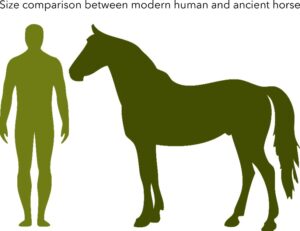HIPPOS THE HORSE IN ANCIENT GREECE
Looking around the Ure Museum it is clear the horse was a popular subject for ancient Greek artists. Why are so many horses pictured in ancient Greek art?
Horses were first introduced to Greece during the mid Bronze Age (circa 1800 BC), and by the Archaic (800–480 BC) and Classical (480–323 BC) Periods the animals were an important part of ancient Greek culture. Horses were expensive to buy and keep, so only the wealthy could afford them. Horses were a luxury, useful for leisure and signifying status [9]. The less wealthy became familiar with horses as spectators at public events [8, 15, 16], and horses featured in the religion and traditions shared by all classes: Poseidon, god of the sea, storms and earthquakes, was also god of horses, so the animals played a role in his worship [2, 3] and legendary heroes had named horses accompanying them in their adventures [5].
Horses were valued and admired by all ancient Greeks. Characterised as swift, loyal and noble animals, horses were therefore held in high regard above other domesticated and wild animals [11]. Artists were quick to recognise this respect for horses, which patrons wanted to exhibit [10].
The objects chosen for this exhibition, which all feature images of horses, explore the ancient Greek experience with the animals and the roles they had in religion, government, warfare and sport.
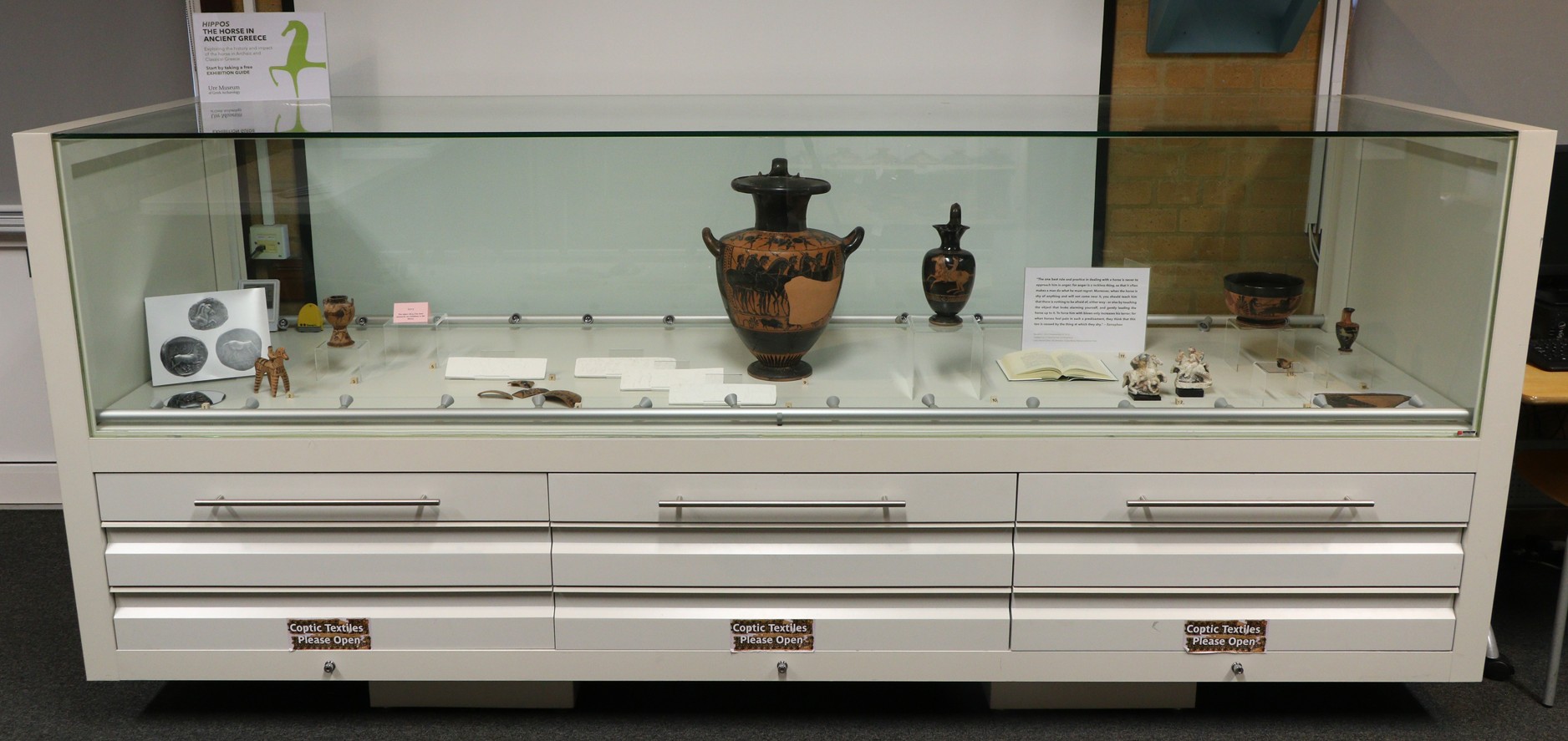
1. Thessalian silver coinage
2. Terracotta horse and rider
3. lebes gamikos
4. Plaster cast of Selene
5. kylix
6. amphora fragments
7. Amazonomachy
8. cavalcade
9. hydria
10. Oinochoe
11. Xenophon
12. terracotta plaques
13. Siana cup
14. Lion hunt
15. skyphos
16. Lekythos

Thessalian silver coinage
1 Thessalian silver coinage, mid 5th century to early 4th century BC, with horses [Loan from a private collection]
The northern region of Thessaly was famous throughout Greece for the quality of its horses and horsemanship. The landscape of the region, with its fertile grassy plains, was well suited for the breeding of horses. Such was the connection between the region and horses, Thessaly was known as the place the first horse, Skyphios, was born from the earth at the command of Poseidon, and the region was said to be home to the half-human half-horse centaurs. Thessalian poleis (city-states) proudly marked their coinage with imagery of horses as a symbol of this.
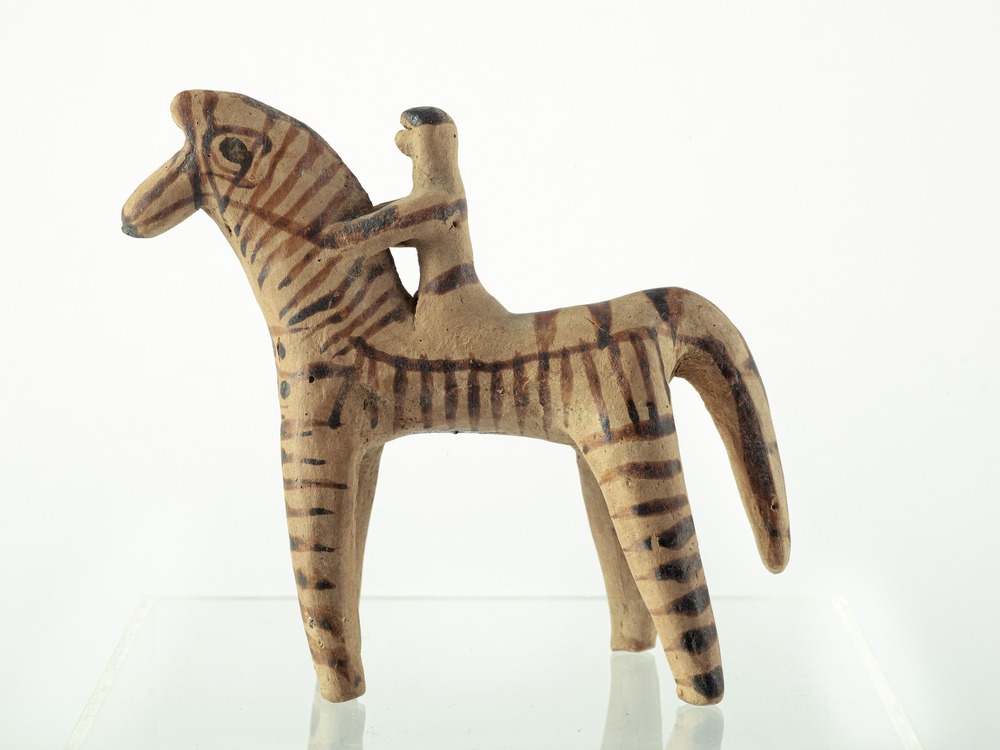
Boeotian terracotta horse and rider figurine
2 Boeotian terracotta horse and rider figurine, mid 6th century BC, with glazed decoration [22.9.8]
This figurine is from the region of central Greece named Boeotia, which linked the horse-rearing grasslands of the north with the powerful cities of the south such as Athens. The people of Boeotia claimed a son of Poseidon, named Boeotos, as their legendary ancestor. Such figurines were used as offerings in the worship of Poseidon, while some were also left as grave goods to link the dead with the prestige of horse ownership.

Boeotian black-figure miniature lebes gamikos
3 Boeotian black-figure miniature lebes gamikos (wedding bowl), 5th century BC, decorated with horsemen and attendants [51.4.11]
The scene decorating this pot perhaps shows riders and horses after a race, being rewarded for their victory. Horseracing, in addition to being a popular sport, was a feature of many religious and civil festivals, especially those in honour of Poseidon. In his role of god of horses, Poseidon was patron of horseracing, and credited with teaching humankind how to tame and ride horses.

Plaster cast of Selene
4 Plaster cast by D Brucciani & Co, early 20th century AD, of the horse head of Selene sculpture from the east pediment of the Parthenon by Pheidias, 438–432 BC (outside case: ‘Greece’ section) [2023.11.1]
The horse whose head is represented in this cast was one of the hippoi athanatoi, ‘immortal horses’, that pulled the chariot of Selene, goddess of the moon, across the night sky. It is shown at the birth of Athena, which decorates the east pediment of the Parthenon, Athens’ great temple of Athena, patron goddess of the city and of wisdom, strategy and craft.

black-figure kylix
5 Boeotian black-figure kylix (wine cup), late 5th century BC, decorated with Pegasos [29.5.2]
Pegasos, the winged horse fathered by Poseidon and born from the blood of the slain Gorgon Medusa when Perseus decapitated her, known for his speed and bravery in the service of Bellerophon and, king of the gods, Zeus.

Amphora fragments
6 Fragments of an Attic black-figure amphora, 6th century BC, decorated with Amazons on horseback [45.10.15]
The Amazons were the mythical all-female warriors found beyond the boundaries of civilisation and known for their fighting ability and horsemanship. Their familiarity with horses added to their exoticism in male-dominated Greece. The Amazons were inspired by the real peoples of the Pontic–Caspian Steppe and the Caucasus (see map below) such as the Scythians and Sarmatians. Found at the edges of the Greek world and famed for their horsemanship, goldsmithing, tattoos and more egalitarian attitudes on the role of women in society, these nomadic peoples were likely the origin of the first horses to arrive in the eastern Mediterranean during the Bronze Age.
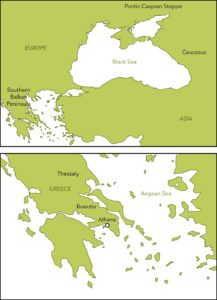
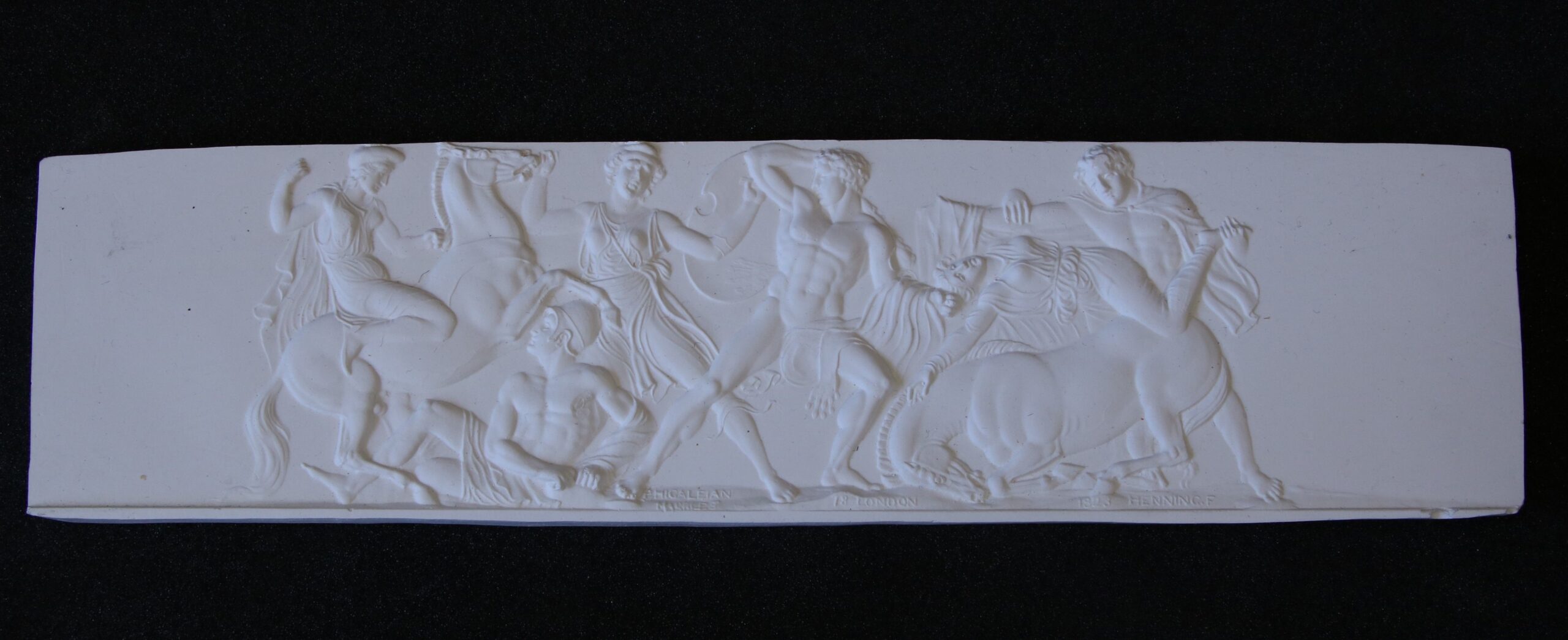
Henning cast
7 Miniature plaster cast by John Henning, 19th century AD, reproducing section of the frieze of the Temple of Apollo, Bassae depicting the Amazonomachy [84.5.37]
The Amazons were the mythical all-female warriors found beyond the boundaries of civilisation and known for their fighting ability and horsemanship. Their familiarity with horses added to their exoticism in male-dominated Greece. The Amazons were inspired by the real peoples of the Pontic–Caspian Steppe and the Caucasus (see map) such as the Scythians and Sarmatians. Found at the edges of the Greek world and famed for their horsemanship, goldsmithing, tattoos and more egalitarian attitudes on the role of women in society, these nomadic peoples were likely the origin of the first horses to arrive in the eastern Mediterranean during the Bronze Age.

Henning casts
8 Miniature plaster casts by John Henning, 19th century AD, reproducing sections of the Parthenon frieze by Phidias, depicting cavalcade,
438–432 BC [84.5.5, 84.5.25, 84.5.33]
These casts reproduce restored sections of the Ionic frieze that encircled the Parthenon. They show the hippeis preparing for and taking part in a procession, probably that of the Panathenaia, a religious festival in honour of Athena. The hippeis, meaning ‘horse owners’, were the second highest class in Athens, and they were expected, as a part of maintaining their status, to keep horses for use in the city’s cavalry during wartime. With 1,200 horsemen at its height in the late Classical Period, the Athenian cavalry was a small force, especially when compared to the hoplitai and psiloi (heavy and light infantry), made up from the city’s middle and lower classes.
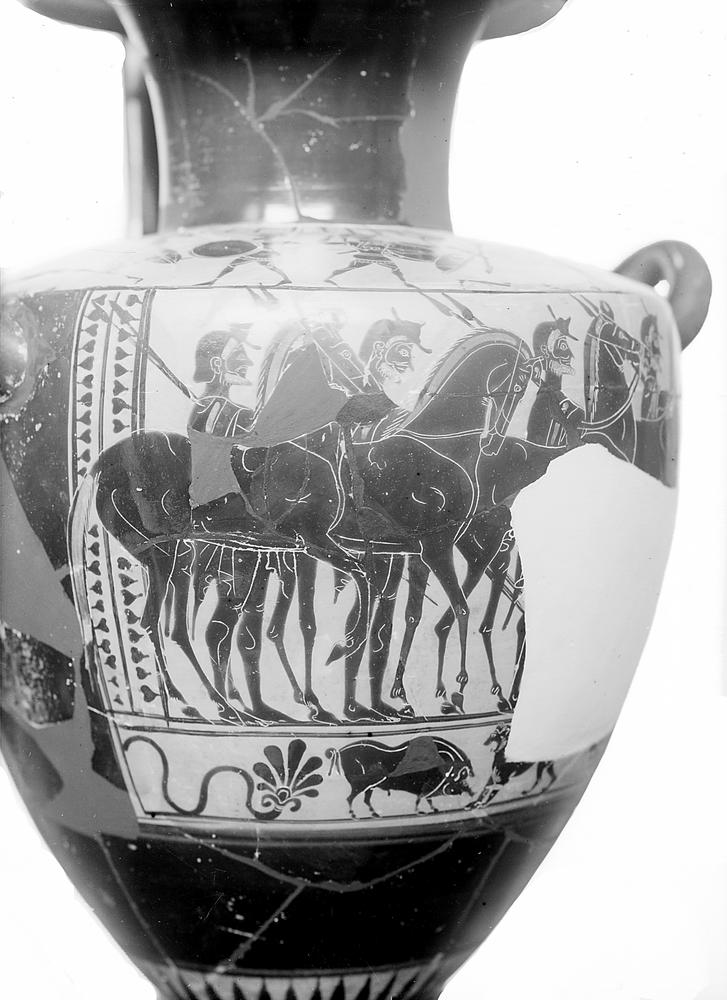
hydria
9 Attic black-figure hydria (water jug), late 6th century BC, decorated with a hunting party [28.9.1]
Shown with well-trimmed beards and styled hair, the men on this hydria are members of the hippeis taking part in a hunt. They wear petasoi (wide-brimmed sun hats) and chlamydes (cloaks), a fashion copied from the famous Thessalian cavalry, and carry spears and javelins as they would on the battlefield. Hunting, especially dangerous game such as the wild boar and lion pictured below the group, was one way the hippeis could train for war, and it also served as a way to create a shared belonging between the cavalrymen.

oinochoe
10 Attic red-figure oinochoe (wine jug) by the Hasselmann Painter, late 5th century BC, decorated with a nude male on horseback [51.7.1]
In order to become a useful hippeus cavalryman, the hippeis would start training soon after gaining citizenship at the age of 18. Many of the hippeis, like the youth pictured on this oinochoe, would already have experience with horses from riding for leisure. Training for both men and horses lasted two years. Each hippeus was expected to be ready for call-up until they reached the age of 60.

Xenophon
11 Xenophon’s ‘Peri hippikes’ (‘On [the art of] horsemanship’), from Xenophon: The Whole Works of Xenophon, translated by Ashley Cooper, Spelman, Smith, Fielding, and others. 1832. On loan from University of Reading Museums and Special Collections Service
Xenophon (430–354 BC), an Athenian general, historian and philosopher, wrote this treatise covering the buying, keeping and training of horses. On the opened pages he instructs eager horsemen to gain the trust of their horses through respect and reward – including belly rubs – and to avoid using fear as a method of control. Horses were valuable companions, not just tools. Losing a horse was not just a financial blow but an emotional one too.
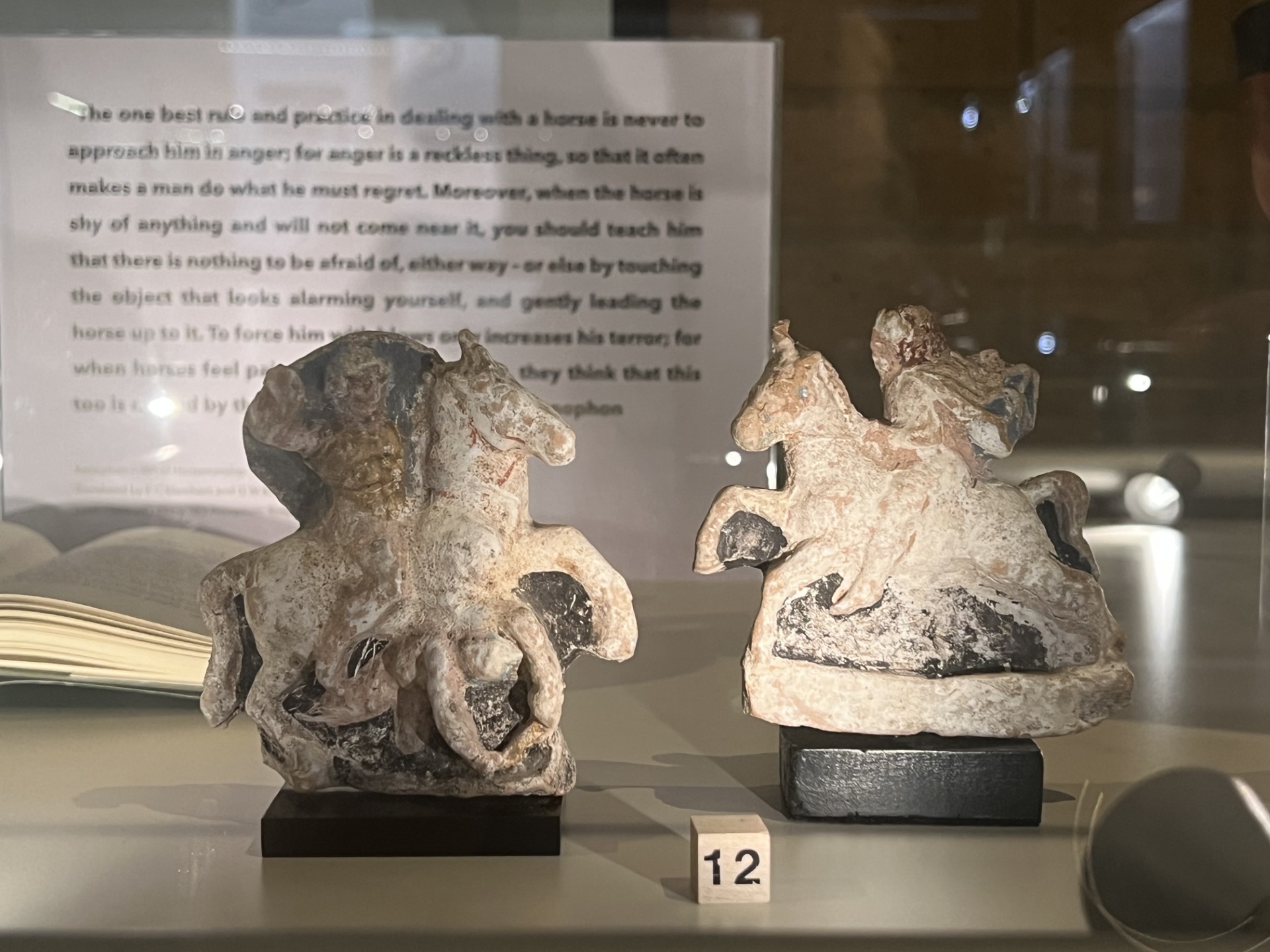
terrcotta plaques
12 South Italian painted terracotta plaques, late 4th century BC, in the form of charging cavalry [Loan from a private collection]
Likely used to decorate a grave marker, these two plaques come from the southern region of Italy, known as Magna Graecia, colonised by the Greeks. Like Thessaly, the region was known for the quality of its horses and cavalry, with the Tarentine horsemen from the polis (city-state) of Taras (modern Taranto) being employed as mercenaries across the Mediterranean. The left figure wears armour typically chosen by cavalrymen: bronze kranos (helmet), bronze thorax (chest armour) over a chiton (tunic) and endromis (tall riding boots). The figure on the right wears nothing but a chlamys (cloak) in Thessalian fashion, flying in the wind behind him. Shields were uncommon for horsemen.

Siana cup
13 Fragment of an Attic black-figure Siana cup (kylix), mid 6th century BC, decorated with the head of a bridled horse [14.9.84]
The tack (riding equipment) used by ancient Mediterranean peoples consisted of a leather bridle (head harness), leather reins (control straps) and a metal bit (mouthpiece). Saddles, stirrups and horseshoes were unknown. Riders sat forward on cushioned saddlecloths and used their thighs to hold their position and sense the horse’s movement while their lower legs hung free. Horse tack could be ornately decorated with metal fittings and colourful fringing, as shown on these royal horses partaking in a ceremonial hunt.
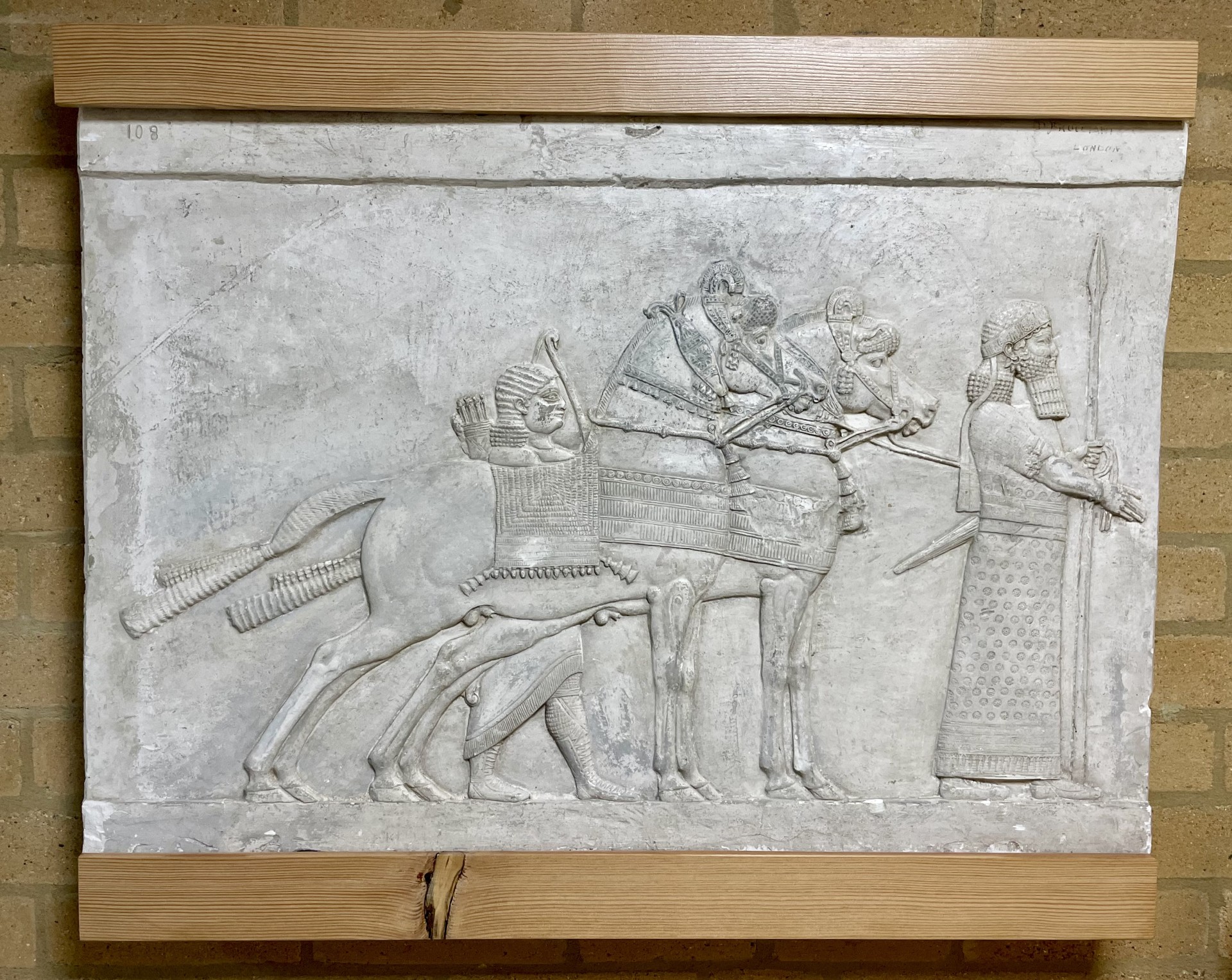
Lion hunt
14 Plaster cast by D Brucciani & Co, early 20th century AD, reproducing section of the Lion Hunt of Ashurbanipal, 645–635 BC (outside case: museum entrance) [2023.11.3]
The tack (riding equipment) used by ancient Mediterranean peoples consisted of a leather bridle (head harness), leather reins (control straps) and a metal bit (mouthpiece). Saddles, stirrups and horseshoes were unknown. Riders sat forward on cushioned saddlecloths and used their thighs to hold their position and sense the horse’s movement while their lower legs hung free. Horse tack could be ornately decorated with metal fittings and colourful fringing, as shown on these royal horses partaking in a ceremonial hunt.

skyphos
15 Attic black-figure cup-skyphos (wine cup) attributed to the Haimon Painter, early 5th century BC, decorated with a charioteer riding a four-horse (tethrippon) chariot [11.10.21]
The earliest horses to arrive in Europe were too small to be ridden and so were used with chariots. By the start of the Archaic Period stronger breeds developed in Asia had been introduced yet the chariot still remained in use for chariot racing. The sport featured in the very first Olympic Games in 776 BC and remained incredibly popular well into the first millennium AD. Races consisted of several laps round an oval track in a dedicated stadium called a hippodromos. The ride was extremely rough due to a lack of suspension and protective equipment. A good team could easily reach speeds of up to 65 kilometres per hour (40 MPH). Crashes were common and could be deadly for both the drivers and the horses. Drivers were almost always from the lowest class or even slaves, and it was only the owner of a team that gained glory (and prizes) from a win.
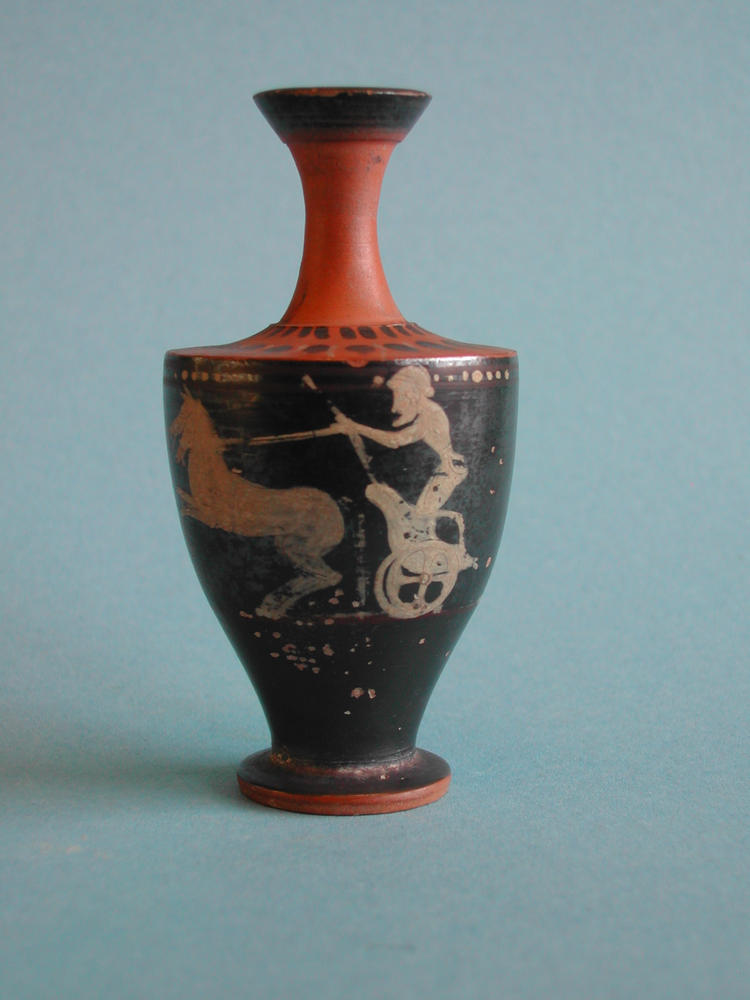
lekythos
16 Attic black-figure lekythos (oil flask), late 6th century BC, decorated with a charioteer riding a two-horse (synoris) chariot [46.9.1]
The earliest horses to arrive in Europe were too small to be ridden and so were used with chariots. By the start of the Archaic Period stronger breeds developed in Asia had been introduced yet the chariot still remained in use for chariot racing. The sport featured in the very first Olympic Games in 776 BC and remained incredibly popular well into the first millennium AD. Races consisted of several laps round an oval track in a dedicated stadium called a hippodromos. The ride was extremely rough due to a lack of suspension and protective equipment. A good team could easily reach speeds of up to 65 kilometres per hour (40 MPH). Crashes were common and could be deadly for both the drivers and the horses. Drivers were almost always from the lowest class or even slaves, and it was only the owner of a team that gained glory (and prizes) from a win.

